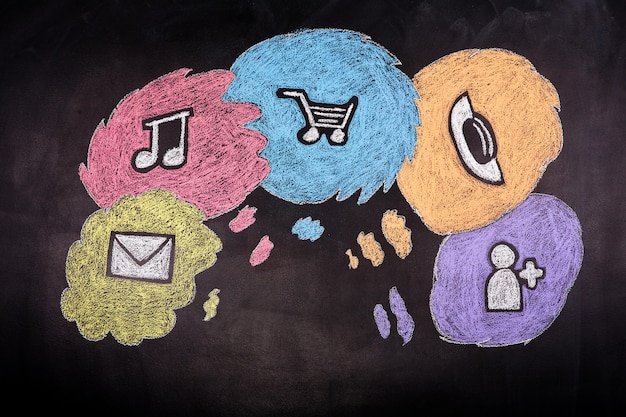Buying Guides: Latest Consumer Trends & Their Impact on Your Choices

Buying Guides: The Latest Trends in Consumer Behavior and How They Affect Your Choices explores the evolving landscape of consumer decision-making, highlighting trends like personalization, sustainability, and digital influence, and providing insights to navigate purchasing decisions effectively.
Are you looking to make more informed purchasing decisions? Understanding Buying Guides: The Latest Trends in Consumer Behavior and How They Affect Your Choices can help you navigate the increasingly complex world of consumerism. Let’s explore the factors influencing what we buy and how to make smarter choices.
Decoding Consumer Behavior: An Introduction
Consumer behavior is a dynamic field that examines the psychological, social, and emotional factors influencing individual decisions, from choosing a brand of coffee to investing in a new car. By understanding these underlying motivations you can make more informed choices when navigating buying guides.
Exploring consumer behavior helps to understand why certain products gain popularity, what motivates customers, and how businesses tailor their approach to influence decisions. This insight is crucial for both consumers looking to optimize their spending, and businesses to attract the right customer.
The Psychology Behind Buying Decisions
Understanding the psychological factors at play can clarify why we make certain choices. Cognitive biases, for example, can lead us to make irrational decisions based on readily available information or preconceived notions.
Social Influences and Trends
Social factors play a significant role in shaping consumer behavior. From family and friends to social media influencers, the opinions and behaviors of others can significantly impact purchasing decisions.
- Cultural Norms: The values, beliefs, and customs that shape a consumer’s preference.
- Reference Groups: The social groups that an individual identifies with and bases their standards on.
- Household Dynamics: The roles and influences among family members that affect buying behavior.
In conclusion, understanding the foundations of consumer behavior will equip you to make better decisions in today’s market. Knowing the psychology and social forces impacting your choices empowers you to navigate the complexities of buying guides with confidence.

The Rise of Digital Influence
The digital age has dramatically transformed consumer behavior, introducing a level of information access and connectivity previously unheard of. From online reviews to social media marketing, the influence of digital platforms is undeniable.
The internet has revolutionized how we gather information, compare prices, and make purchase decisions. Consumers now have access to a wealth of information, including peer reviews, product comparisons, and brand information, all at their fingertips.
The Impact of Online Reviews and Ratings
Online reviews and ratings have become a crucial element in the buying process. Potential customers often rely on the experiences of others to gauge the quality and reliability of a product or service.
Social Media’s Role in Shaping Consumer Preferences
Social media platforms have emerged as powerful tools for shaping consumer preferences and driving sales. Brands now engage with customers directly, using targeted advertising and influencer marketing to promote their products.
- Influencer Marketing: Collaborations with social media personalities to promote products.
- Targeted Advertising: Using data to display ads based on demographics and interests.
- Brand Engagement: Direct interactions with customers through social media.
The digital age has fundamentally changed the way we make purchasing decisions. Digital influence is now interwoven with our habits, making understanding the key factors crucial to navigating today’s economy.
Personalization and Customization
One of the most significant trends in consumer behavior is the increasing demand for personalization and customization. Consumers now expect products and services tailored to their individual needs and preferences.
Personalization offers a sense of individuality and shows the importance of the customer’s preferences. Businesses are tapping into this need, offering customized products, services, and experiences.
The Desire for Tailored Products and Services
Consumers no longer settle for generic offerings. They seek out brands that can meet their specific needs and provide a personalized experience.
How Brands Are Adapting to Personalization
Businesses are using various techniques to personalize their offerings, leveraging data analytics and customer feedback to create customized products and marketing campaigns.
- Data Analytics: Using data to understand consumer preferences and behaviors.
- Customizable Products: Offering product options to fit individual needs.
- Personalized Marketing Campaigns: Tailoring marketing messages based on customer data.
The trend of personalization is pushing businesses to innovate and connect with their customer base on a personal level. This shift highlights the need to cater to individual preferences in the modern buying landscape.

Sustainability and Ethical Consumption
Sustainability and ethical consumption have become major forces driving consumer behavior. More and more consumers consider the environmental and social impact of their purchasing decisions.
Consumers are increasingly concerned about the environmental and social consequences. This has prompted a shift towards brands that demonstrate a commitment to ethical practices.
The Growing Concern for Environmental Impact
Consumers are becoming more aware of issues like climate change and waste reduction, impacting their purchasing decisions. Many now favor brands with sustainable practices.
The Rise of Ethical Brands
Ethical brands that prioritize worker rights, fair trade, and environmental sustainability are gaining loyalty, leading to greater consumer participation in ethical consumption.
- Fair Trade Practices: Ensuring producers in developing countries receive fair compensation.
- Eco-Friendly Products: Offering products made from sustainable or recycled materials.
- Transparent Supply Chains: Providing clear information about the sourcing and production of goods.
Ethical considerations are evolving consumer choices, creating a business landscape that values sustainability and responsible corporate practices. This trend mirrors a broader societal shift toward more conscious consumption.
The Influence of Economic Factors
Economic factors significantly influence consumer behavior. Economic conditions like inflation, recession, and unemployment can drastically affect how individuals and households manage their spending and buying decisions.
Economic factors have an enduring influence on consumer behavior, shaping what people buy, how much they spend, and where they shop. It is important to grasp the nuances of economic impact on consumer choices for businesses and consumers alike.
How Economic Downturns Impact Buying Habits
During economic downturns, consumers typically become more price-sensitive and prioritize essential purchases over discretionary ones. They tend to reduce spending on non-essential items and seek deals and discounts.
The Role of Income and Employment
Income and employment levels directly correlate with consumer spending. Higher income and job security often lead to increased spending, while job losses and reduced income can result in significant cutbacks.
- Consumer Confidence: Optimism about personal financial situations and the economy, often leading to increased spending.
- Interest Rates: Influence borrowing costs, with low-interest rates encouraging larger purchases.
- Inflation Rates: Affect purchasing power, with rising prices potentially reducing consumer spending.
Economic factors are an integral part of consumer behavior. To navigate effectively in varying economic climates, businesses and consumers alike must learn to adapt their practices.
Future Trends in Consumer Behavior
As technology continues to evolve, and societal values shift, expect consumer behaviors to evolve. Understanding and anticipating these trends will be critical for businesses. As technological advancements accelerate and global events redefine priorities, several key trends are anticipated to shape the consumer landscape.
Consumer behavior is dynamic, shaped by technological advancements, societal values, and economic conditions. Understanding these trends is important for businesses that want to connect with consumers effectively.
The Role of Augmented Reality (AR) and Virtual Reality (VR)
AR and VR technologies create immersive shopping experiences. These will enable consumers to visualize products in their homes or try clothes on virtually, enhancing the customer experience, and driving sales.
Artificial Intelligence (AI) and Personalization
AI technologies are revolutionizing personalization by analyzing vast amounts of data to understand consumer preferences. This will allow businesses to offer products and services tailored to individual needs and behaviors.
- Increased Demand for Transparency: Consumers want to know where products come from and how they are made.
- Emphasis on Community: Consumers value brands that support their communities and align with their values.
- Greater Focus on Health and Wellness: Health and wellness considerations are increasingly influencing buying decisions.
Anticipating and adapting to these trends will be essential for businesses looking to stay competitive and meet the evolving needs of their customers. These trends are set to reshape how products are marketed, sold, and consumed.
| Key Point | Brief Description |
|---|---|
| 💡Digital Influence | Online reviews and social media shape buying decisions. |
| 🛍️Personalization | Consumers demand tailored products and services. |
| 🌍Sustainability | Ethical concerns drive eco-friendly choices. |
| 💸Economic Factors | Economic conditions influence spending habits. |
FAQ
▼
Buying decisions are influenced by psychological factors, social trends, digital influence such as online reviews and social media, economic factors like recession and unemployment rates, and personal factors like age, income, and lifestyle.
▼
Personalization is very important. Consumers expect products and services that cater to their individual needs and preferences. Brands that offer tailored experiences gain more customer loyalty and drive sales.
▼
Consumers are increasingly conscious of the environmental and social impact of their purchases. They favor brands that showcase commitment to sustainability through eco-friendly practices and ethical sourcing.
▼
Economic downturns, such as recessions, change spending habits. Consumers tend to prioritize essential purchases over discretionary items and look for deals. Income and employment levels also correlate with consumer spending.
▼
Augmented and virtual realities will create immersive shopping environments. AI will personalize offerings. There is increased demand for transparency, greater emphasis on community values, and the growing influence of health and wellness in buying decisions.
Conclusion
Understanding Buying Guides: The Latest Trends in Consumer Behavior and How They Affect Your Choices is essential both for businesses seeking to connect with their audience and for consumers aiming to make informed decisions. By adapting to these ever-evolving trends, consumers can navigate the complex market with more efficacy and businesses can create more tailored relationships.





